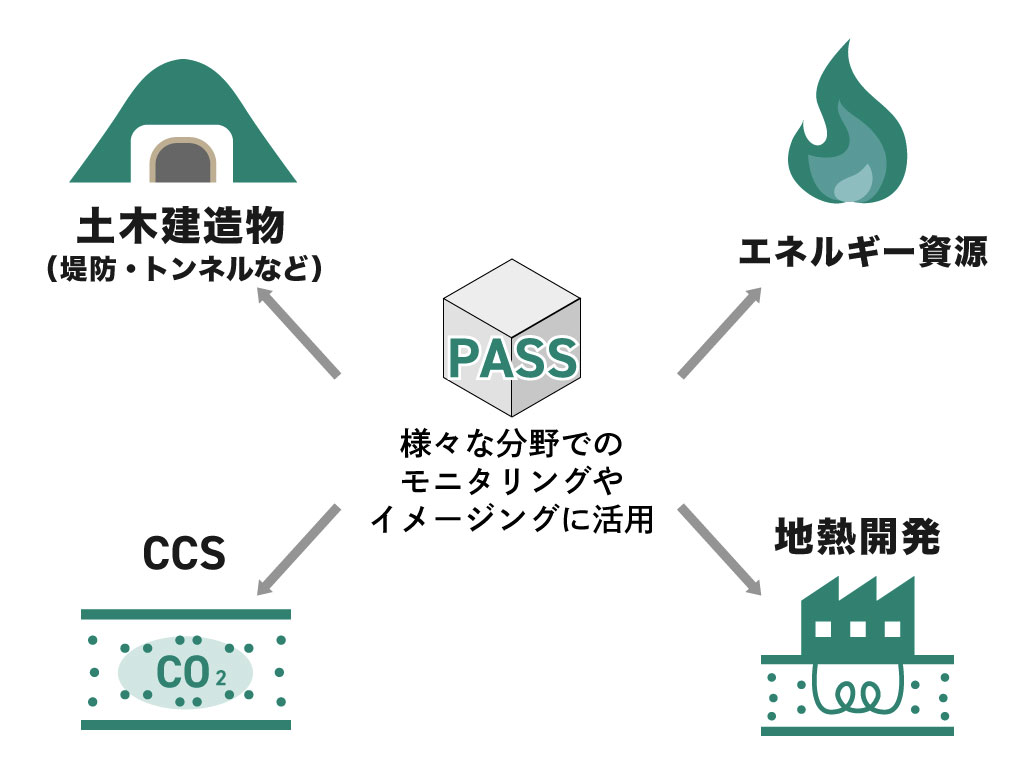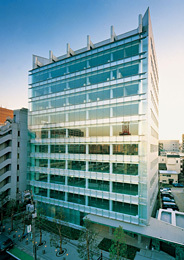地球温暖化を防止するために結ばれたパリ協定では、気温上昇を1.5℃未満に抑えることが目標となり、日本においても2050年までにカーボンニュートラルの実現に向けた取り組みを行っています。
国際エネルギー機関(IEA)は、地球の気温上昇を1.5度以内に抑えるために、CO2回収・貯留(CCS)で約15%のCO2を削減する必要があるとしていますが、これには年間100万トンを貯留する場所が世界で約6000ヵ所必要な計算になります。日本もこのCO2地中貯留により、2050年までに1.2~2.4億トンものCO2を減らそうとしているため、CCSの実現は日本においても世界においても喫緊の課題です。CCSの普及に向けては、CO2の漏洩とそれが誘発する地震が懸念されており、これを防止し、安全を担保するために、CO2の状態を継続的に監視する仕組みが求められています。
これまで一般的に用いられてきたモニタリング手法では、大型の振源装置を利用し、1回のモニタリング調査に1億円単位のコストが必要でした。そのため、モニタリング調査を繰り返し実施し、貯留CO2の挙動を連続的に捉えることは困難で、急なCO2の漏洩などに対応できない恐れがありました。
東京大学辻研究室のグループが開発した超小型振源装置(PASS)は、超小型で低コストであるため、CO2貯留サイトにおける多数のPASSの定常的な設置や、アクセスの悪い場所での設置が可能になり、急なCO2の動きを捉えることが可能となりました。
この小型振源装置PASSは、CCSだけでなく、地熱開発、石油・天然ガスなどのエネルギー資源のモニタリング、堤防やトンネルなど土木建造物などのモニタリングにも利用できます。また、東京大学の辻研究室では、月や火星などの宇宙での、PASSを用いた探査に向けた共同研究も進めています。
WAVELETでは、大きな可能性を秘めた小さな振源装置PASSを、様々な分野で実装化し、持続可能な社会の実現に貢献していくことを目指します。

Member
経営メンバー
岩本 友幸
代表取締役CEO
大阪府立大学大学院 農学生命科学研究科専攻 修士課程修了。
丸紅株式会社にて原子力事業、再生可能エネルギー事業、天然ガス開発事業などに従事。
その後、外資系IPP企業を経て2024年11月に当社代表取締役CEOに就任。
自然豊かな島根県で地域の人々に囲まれて育ち、仕事を通して地球環境保全や社会・地域貢献を行いたいと願う。
休日は子供達と遊び、市民体育館のジムと近所の銭湯に通う。
高橋 明久
取締役フェロー
東北大学大学院理学研究科地球物理学専攻修士課程修了後、石油資源開発(JAPEX)にて勤務。
JAPEXでは環境・新技術事業本部の執行役員を務める。
物理探査技術者として企業や大学における研究・教育活動も行なっている。
好きな言葉は「好奇心」
京都大学大学院工学研究科都市基盤工学専攻 博士課程終了 博士(工学)
辻 健
取締役CS(Chief Scientist)
東京大学大学院工学系研究科システム創成学専攻 教授。地球や月・火星などの地下構造をイメージングする探査技術と、地下の動きを捉えるモニタリング技術の開発を行っている。元々は地震などの理学的な研究をおこなっていたが、地球温暖化が解決すべき喫緊の課題と考え、最近ではCCSやエネルギーに重点を置いた研究を行なっている。温泉でのんびり過ごすのが好き。
東京大学大学院理学系研究科地球惑星科学専攻 博士課程修了 博士(理学)
島田 周
社外取締役
Company Profile
会社概要
| 企業名 | 株式会社ウェーブレット |
| 登記地 | 東京都練馬区 |
| 住所 | 〒112-0004 東京都文京区後楽2-3-21 住友不動産飯田橋ビル 3F Room 6 |
| 電話番号 | 03-6265-1957 |
| 設立 | 2022年7月 |
| 代表取締役 | 岩本 友幸 |
| 取締役 | 高橋 明久・辻 健・島田 周 |
| 主な事業内容 | 振動計測を用いた環境モニタリングの技術サービス |
| 主な取引銀行 | 三井住友銀行・西京信用金庫 |

Contact
お問い合わせ
下記のボタンよりお問い合わせください。

